
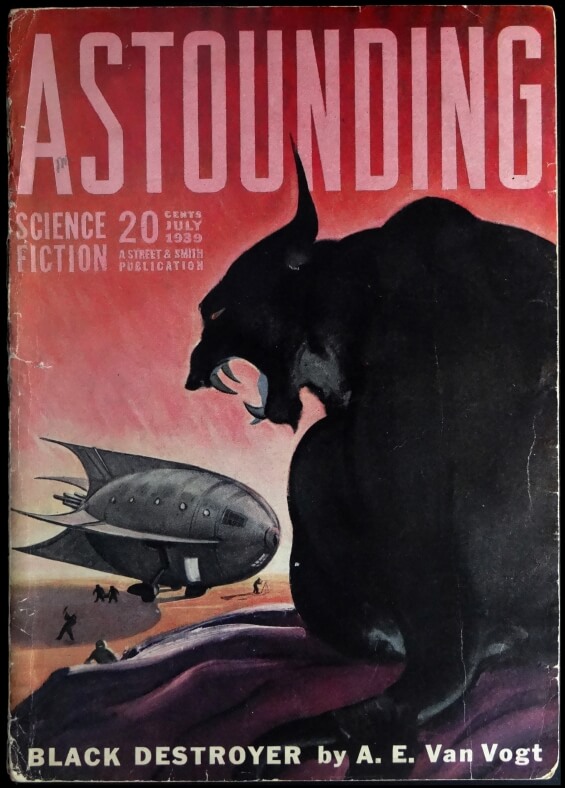
“‘It was history, honorable Mr. Smith, our knowledge of history that defeated him,’ said the Japanese archaeologist, reverting to the ancient politeness of his race.”
-A.E. van Vogt’s Black Destroyer (Astounding Science Fiction, July 1939)
Ridley Scott’s Alien (1979) takes inspiration from a number of sources. The oldest direct literary allusion is to Joseph Conrad’s 1904 novel Nostromo. Nostromo, beside being the book’s title, is also the name of the novel’s protagonist and the name of the ship in Alien. Conrad’s novel is set in a fictional South American nation of Costaguana and in it’s seaport town of Sulaco, the name of the ship in Aliens.
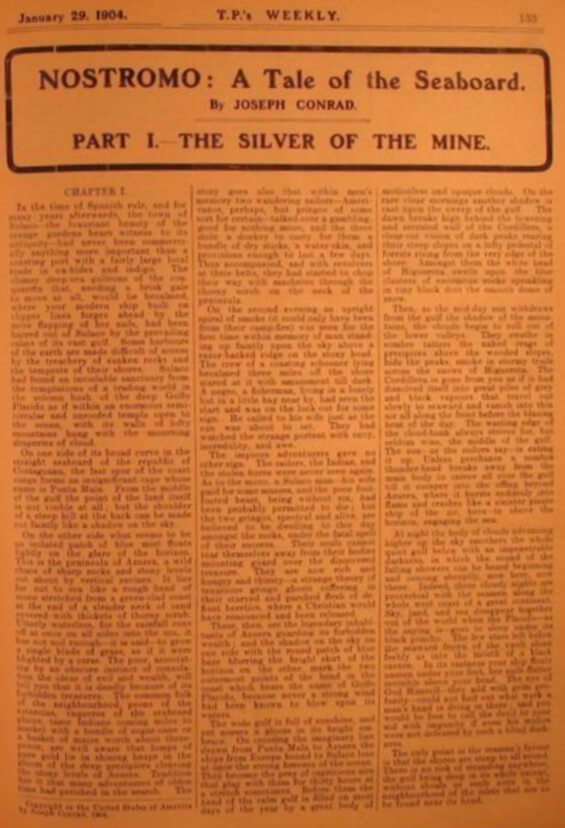
In the novel Nostromo is an Italian seaman, a trusty capataz de los cargadores, a hyper-competent, but resentful, head longshoreman, and an employee of the Oceanic Steam Navigation Company (perhaps hence forth to be named either “the company” or Weyland-Yutani). Having settled in the seaside town “Sulaco” he has established himself as an the indispensable man.
The crew of the Nostromo, in Alien, act much more like longshoremen than they do sailors – though I note that they are more commonly referred to as long haul trucker types*. But, given all the union shop talk, the bonuses, and all the loading and unloading equipment all over their ship (all those chains hanging down, remember?) and also Ripley’s later work with power loaders in the sequel, Aliens, the comparison to longshoremen is more apt. Moreover, the ship in Alien is named “Nostromo” and is a commercial mining ship.
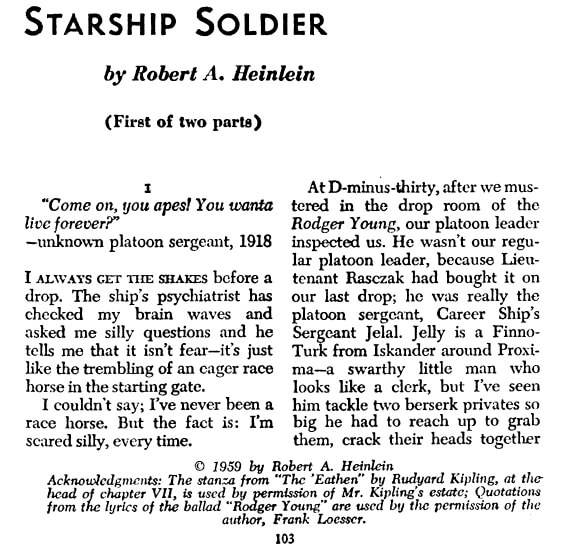
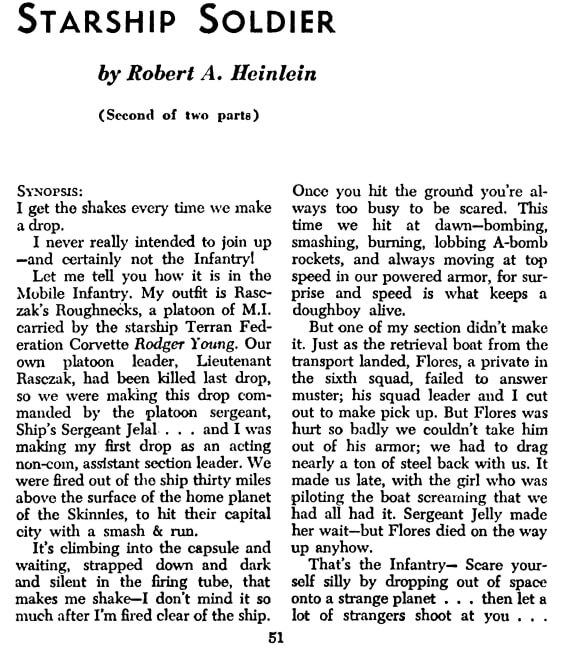
James Cameron’s Aliens (1986) is mostly inspired by Alien (1979), having approximately the same recipe and relationship that Terminator 2 (1991) has to The Terminator (1984), yet Cameron still acknowledges the inspiration of Robert A. Heinlein’s novel, Starship Troopers (firrst published as “Starship Solider“). And, you can totally see it – what with the “combat drops” and the “bug hunts” and the power armor (powered exoskeletons).
Finally, and I posted about this back in 2012, there is a massive inspiration for the alien of Alien coming from a 1939 novelette by A.E. van Vogt, Black Destroyer. That story is told from the perspective of the intelligent alien animal. Here’s the art for it from the original publication:
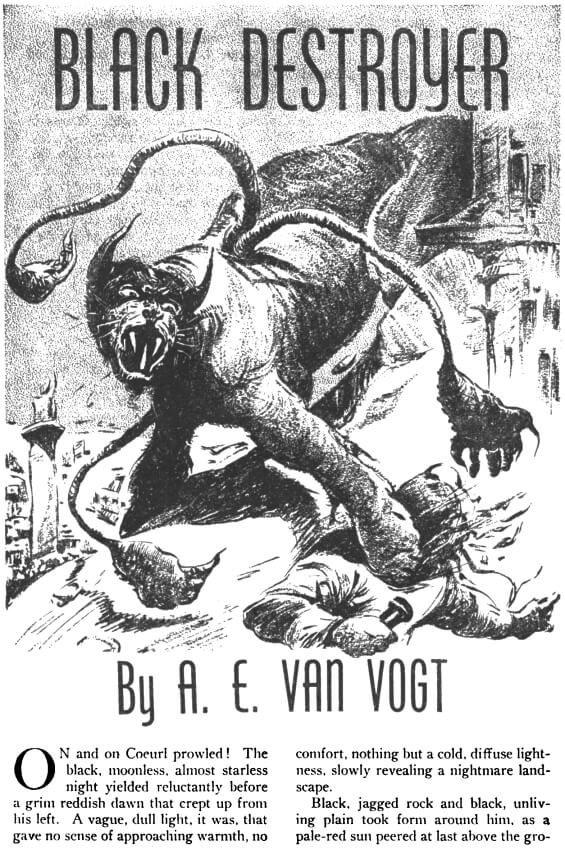
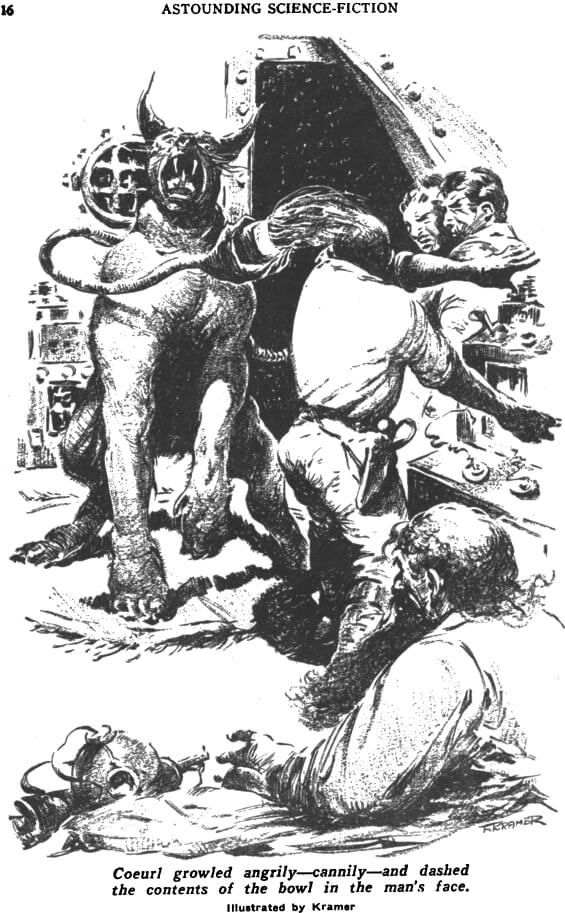
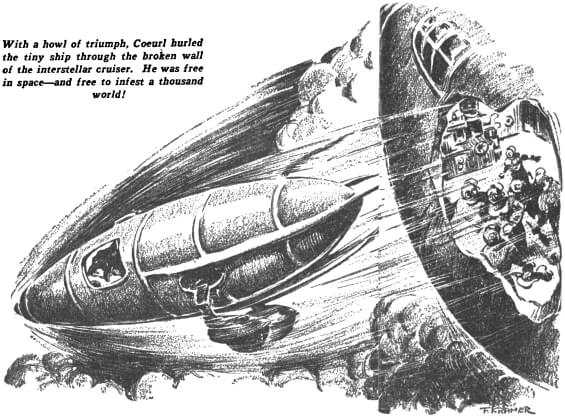
More on Black Destroyer can be found here:
Newest to me, and perhaps least known [thanks to Chris for the pointer], is the fact that A.E. van Vogt’s second story in Astounding (December 1939), also influenced Alien. The story is entitled, Discord In Scarlet.
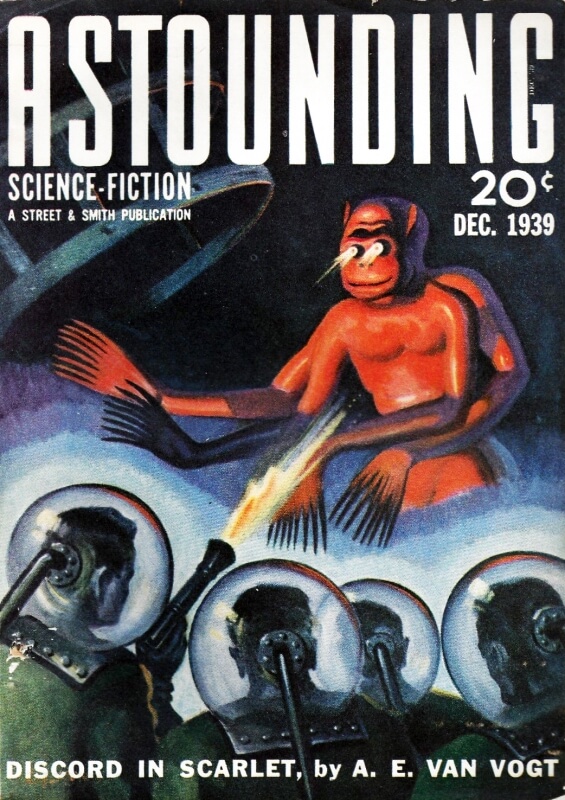
Again the cover story, Discord In Scarlet featured another alien horror attacking a crew of humans, but this one doesn’t so much look like the alien from Aliens as it does act like it – specifically it has the ability to plant its eggs in men for reproductive purposes. I’ve highlighted a gruesome passage here:
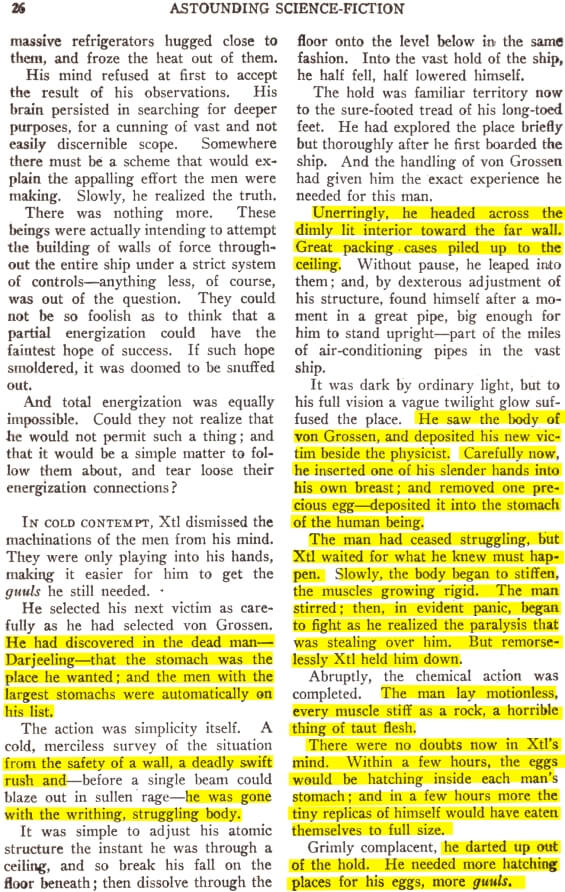
Also evocative, is the interior art for the story, two of the illustrations use some colour (rather rare for Astounding):
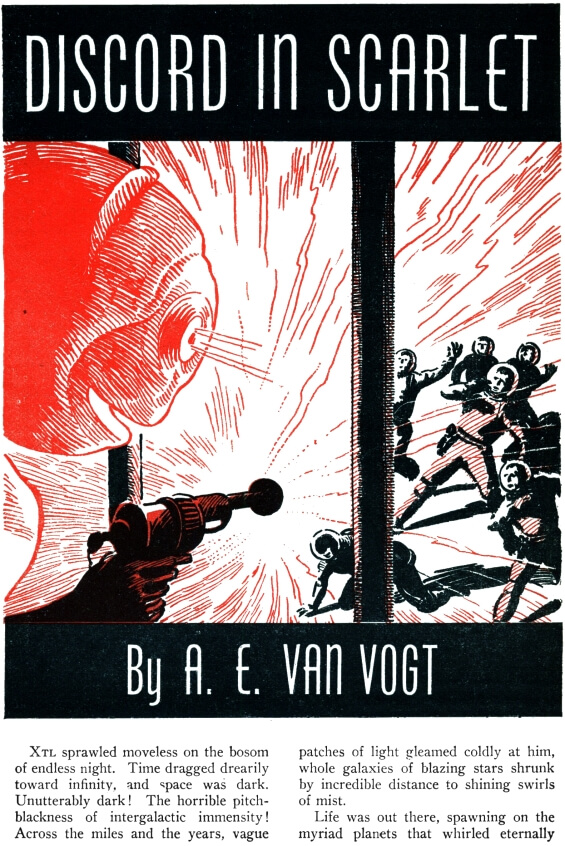
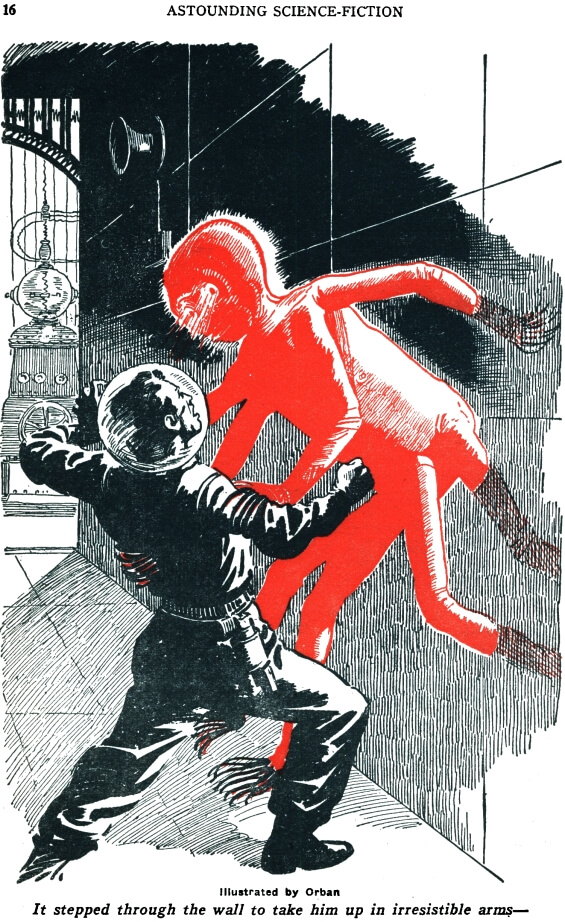
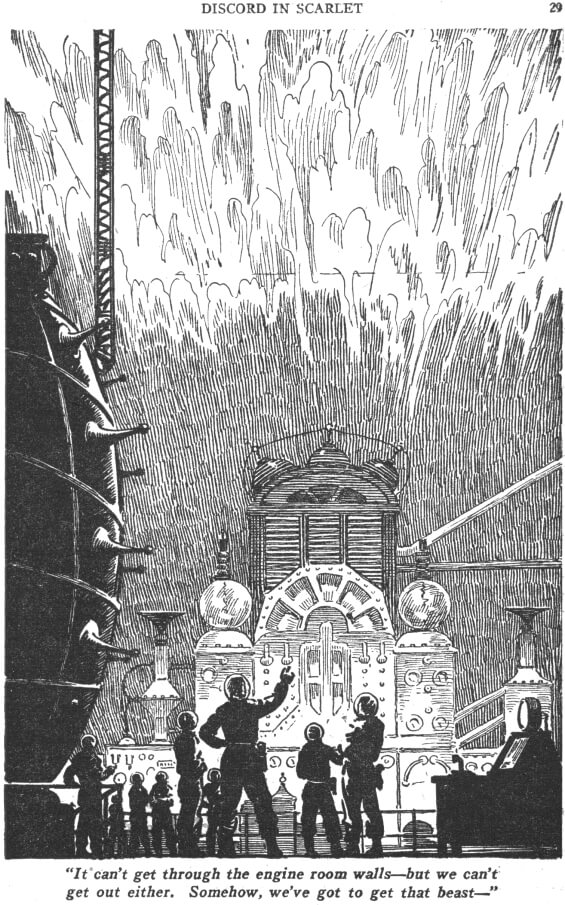
Both Black Destroyer and Discord In Scarlet were incorporated, with some revisions, into van Vogt’s fix-up novel The Voyage Of The Space Beagle.
Posted by Jesse Willis
*there is a D-grade movie called Space Truckers